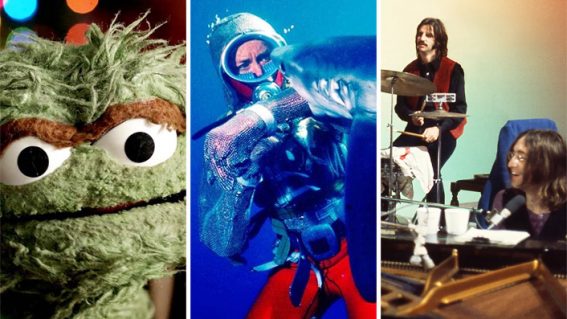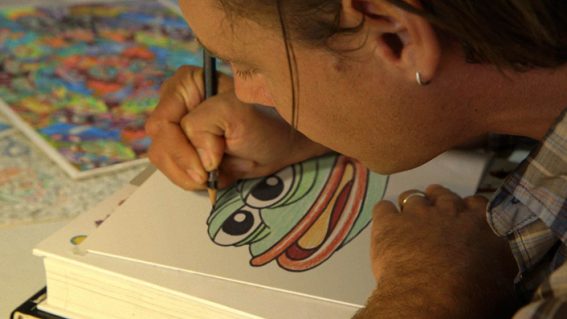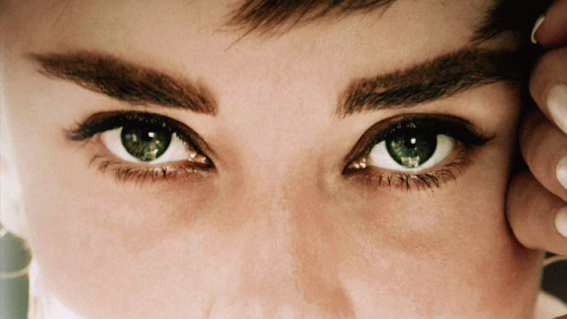Spaceship Earth is an inspiring documentary about art and science
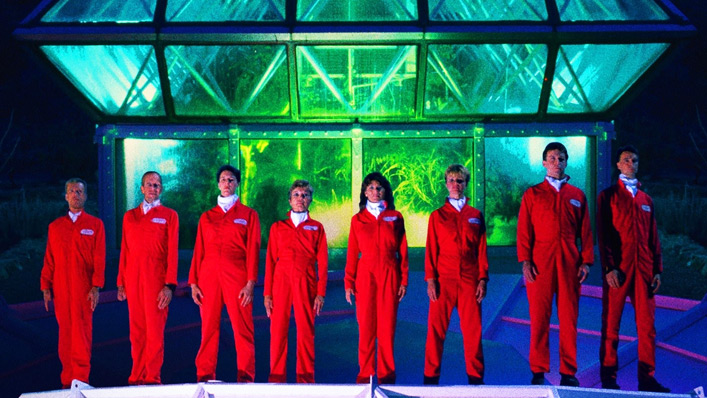
Available to stream on Docplay, Spaceship Earth documents a stranger-than-fiction eco-experiment conducted in the 1990s. It is a captivating tribute to art and science, writes critic Luke Buckmaster.
Releasing a documentary at this moment in time, about a group of people removing themselves from society to live in a controlled environment for an extended period, is a sure-fire way of generating a thousand thinkpieces connecting it to the present, hermetic era of self-isolation and social distancing. Even if the timing was accidental. The truth however is that any time would be opportune for the release of Spaceship Earth, given director Matt Wolf’s film is highly relevant to another issue that won’t be disappearing any time soon, presenting another curve that desperately needs to be flattened: the big one reading “climate change.”
See also:
* All new streaming movies & series
* 10 unbelievable documentaries to stream after Tiger King
Capturing a strange and interesting experiment in 1991, involving eight scientists moving into a giant terrarium erected in the Arizona desert and staying there for two years, this undertaking was not about saving the environment per se. It was about creating and living in a smaller and more eco-sustainable, self-sufficient environment that could be constructed somewhere in space, drawing on areas of thought highly relevant to the climate crisis—including permaculture and off-the-grid living. The underpinning motivation was the question of how to build a better world. As one of the scientists reflects: “When you even visualise a colony off the planet, suddenly you’re rethinking what’s possible.”
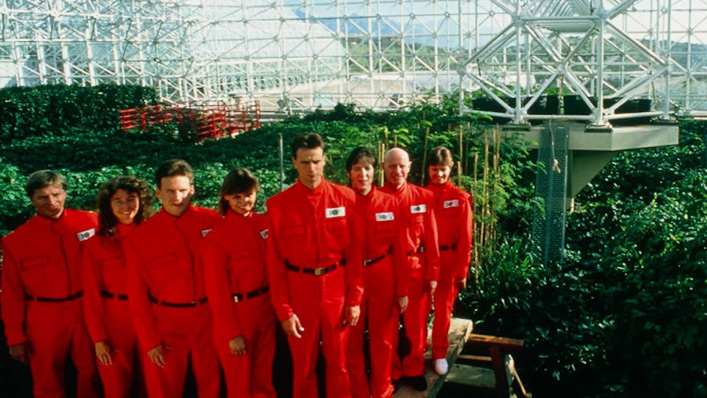
Parts of the media painted the experiment as a spectacular failure, suggesting the group cheated or were incompetent. A carbon monoxide scrubber was cause for controversy, for instance, as was a visit to the emergency ward after one of the participants put their hand in a mulcher. But deriding the experiment as a failure strikes me as ridiculous. Not because it wasn’t a failure, but because trial and error is how experiments work: you do something, you fail, you do it differently, you fail again. You continue the process of learning and evolving.
Spaceship Earth is a captivating documentary about, in essence, interesting people doing interesting things. I recommend the film, but if you want to read a review head over to Rotten Tomatoes. I agree with the gist of the opinions expressed there. In this article I want to do something a little different, given the bulk of writing about Spaceship Earth naturally focuses on what happened inside the impressive dome-like edifice. Less attention is given to what happened before the subjects entered this space, though this consumes roughly the first third of the running time and from a certain perspective is the most interesting.
The coordinating group of the project were a tight collective, though not in ways you might expect—i.e. huddled in a laboratory somewhere. They were part of a travelling theatre group called The Theatre of All Possibilities, which was co-founded by Kathelin Gray and the group’s leader, John Allen, both of whom feature prominently in the film.
Creating theatre and other dramatic artworks is not dissimilar to recreational drug use, in that it enables creators to change the state of reality and contemplate different planes of existence. This develops a certain kind of intelligence, involving understanding distinctions between the immutable laws of the known universe (laws of gravity, physics, causality etc) and constructs that are entirely human-made (i.e. social behaviour, etiquette, political and economic infrastructures). Creating theatre, creating art, is creating a different world.

In that sense it’s no surprise that the whole idea for the biosphere, called Biosphere 2 (because the group viewed the earth as the first experiment) came about, according to the film, when Kathelin told John she wanted to do something inspired by the plot of a book she was reading: Mount Analogue, by the French novelist René Daumal. Kathelin describes the plot as being “about a group of people who decide to live on an island that didn’t exist on any map.” John took her suggestion seriously and together the group developed a plan.
What a beautiful thing: when art inspires science. The connection between the two schools of thought is not made all that often, despite evidence of its existence being all around us.
As designer and technologist John Maeda reflects on Scientific American, in an article titled Artists and Scientists: More Alike Than Different, there is a common assumption that art and science are polar opposites: “one data-driven, the other driven by emotion.” Both however fundamentally involve asking questions and seeking answers. These questions, says Maeda, include classics of the noodle-scratcher genre such as “What is true? Why does it matter? How can we move society forward?’” The scientist’s laboratory and the artist’s studio are places of deep thought, as Maeda goes on to say, “reserved for open-ended inquiry, for failure to be a welcome part of the process, for learning to occur by a continuous feedback loop between thinking and doing.”
A feature on Forbes titled Why Art And Science Are More Closely Related Than You Think puts it in even simpler terms. “Both science and art,” it reads, “are human attempts to understand and describe the world around us.” There are countless examples strewn throughout history of art influencing science and vice versa. Among the most famous and obvious is the work of Leonardo DaVinci: a great artist; a great scientist; a genius because he saw no meaningful distinction between one school of thought and the other.
Viewing life as a large, sprawling art project is something I’ve found personally helpful during challenging situations. As a climate activist, for instance, participating in protests organised by groups such as Extinction Rebellion, there have been occasions when my participation in an event involved something more demanding than just holding a placard or walking down a street (and one particular occasion in which I ended up in a watchhouse cell). Times, in other words, when I was required to to leave my comfort zone—not dissimilar to other situations that people tend to feel anxiety towards, such as public speaking. Viewing such situations as part of a massive art project called “life” can be liberating. It doesn’t mean you don’t take such situations seriously, rather viewing them as part of a tapestry of experiences that play out on a limited timeline.
So I loved the moment in Spaceship Earth when one of the scientists described Allen’s leadership qualities by saying: “Part of John Allen’s genius was helping people realise ‘it’s all theatre’”. Brilliant. It’s almost impossible to hear those words and not associate them with Shakespeare, who once famously said: “The whole world is a stage, and all the men and women merely actors.” Even if that stage happens to be a giant terrarium, and the actors happen to be scientists.






